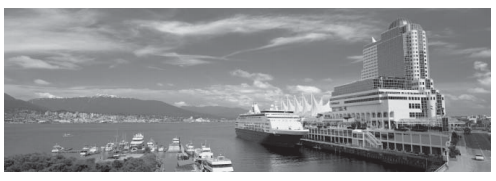From the Editor’s Desk
Although September is seasonally a weak month for the stock market, it looks like a pretty strong one for the MTA and Technically Speaking. On the cover, long-time MTA Member and cycles expert Peter Eliades pays tribute to James M. Hurst, who passed away on August 18th at the age of 81. Mr. Hurst is one of the founding fathers of technical analysis. His classic book, “The Profit Magic of Stock Transaction Timing”, was the reason Peter chose technical analysis as his life’s work. Inside, there are some terrific educational articles by Dave Landry on swing trading (Part 2 in a 3-Part series), by Larry Connors on up days in a row versus down days in a row in the stock market, and on inflation-adjusted stock market trends by Dr. Brett Steenbarger. In addition, our Executive Director John Kirby gives us a progress report in the MTA’s transition to our new technology platform, Net Forum by Avectra. Early this year, fellow MTA Board Member Duke Jones and I were personally involved in the process of evaluating our then-current platform,To view this content you must be an active member of the TAN Association.
Not a member? Join the TAN Association and unlock access to hundreds of hours of written and video technical analysis content, including the Journal of Technical Analysis and the Video Archives. Learn more about Membership here.
What's Inside...
From the President’s Desk The Men Behind the Curtain
by Jordan Kotick, CMTIt will come to no surprise to anyone that I am bullish on the CMT. I am bullish on the growing global interest we are receiving, especially from Europe and India, I am bullish on our SRO success and...
From the Executive Director’s Desk Training Training Training
by John R. KirbyHave you ever had dental surgery? Ever had it for three days? As I write this column your staff at the MTA, Marisa, Marie, Cassandra, Jeanne, and Tim are all going through three days of intensive...
In Memory of James M. Hurst
by Peter EliadesJ. (James) M. Hurst was born in Salina, Kansas on September 2nd, 1924 and died in his sleep on August 18th, 2005 in Roseville, California, just weeks short of his 81st birthday. It is safe to presume...
Regions Update
by John Kosar, CMTThe Board has recently voted in some new guidelines for Regions. The purpose of these new guidelines is to better clarify the relationship between the Regions and the MTA Board. They are listed...
Don’t Miss the International Technical Analysis Event of the Year! - Digging for Gold Vancouver – November 3, 4 & 5, 2005
by Matt Blackman, CMTThe Canadian Society of Technical Analysts (CSTA) is hosting the 18th Annual IFTA Conference this year in beautiful Vancouver, British Columbia, Canada. Entitled Digging for Gold Vancouver 2005, it...
A Long-Term Look at the Market
by Brett N. Steenbarger, Ph.D.Below we have a long-term chart of the Dow Jones Industrial Average from January, 1950 through early August, 2005. Note that the Dow has been adjusted for the Consumer Price Index (CPI) to reflect...
The Foundation For Successful Swing Trading, Part 2.
by Dave LandryPlacement of the initial protective stop is as much of an art as it is a science. Too close and you will almost surely guarantee yourself a loss as the “noise” of the market will stop you out....
Up Days in a Row vs. Down Days in a Row
by Laurence ConnorsWhat does the market do after it rises or falls consecutive days in a row? Common wisdom states that a market that rallies a few days in a row is strong and a market that drops a few days in a row is...
MTA Welcomes... Mohan Turaga
by John Kosar, CMTI would like to introduce and welcome new Technically Speaking Contributing Editor Mohan Turaga. Mohan, who is from India, adds a little international perspective to our Newsletter, which I think is...
It will come to no surprise to anyone that I am bullish on the CMT. I am bullish on the growing global interest we are receiving, especially from Europe and India, I am bullish on our SRO success and psych metrically valid uniqueness and I am very bullish on where the CMT is heading over the next 5-10 years. However, too often, as is the case with many organizations, the key players who more than volunteer their time and energy get lost in the shuffle. That is not going to happen with this administration and I therefore wanted to take this opportunity to highlight the tremendous work that has been done over the years on the CMT by so many, but specifically Les Williams, Phil Roth, Barry Sine, Jim Balchunas and Mark Cremonie. I have mentioned David Krell, Ralph Acampora and John Kirby, without whom, we would not have had
To view this content you must be an active member of the TAN Association.
Not a member? Join the TAN Association and unlock access to hundreds of hours of written and video technical analysis content, including the Journal of Technical Analysis and the Video Archives. Learn more about Membership here.
Contributor(s)

Jordan Kotick, CMT
Bio
Have you ever had dental surgery? Ever had it for three days? As I write this column your staff at the MTA, Marisa, Marie, Cassandra, Jeanne, and Tim are all going through three days of intensive hands on training on our new technology platform called Net Forum from Avectra.
Andria McQueen, our account manager from Avectra has been doing a fantastic job. We continue to be very pleased with the decision the Technology Committee made to choose this new system. But, as you can imagine, all other work must slow down during the training, and your staff is making a tremendous effort to keep all the other wheels in motion at the same time.
As an aside, we learned yesterday that CFAI has chosen Avectra as the technology platform they will use for their new designation that will be introduced next March. Thanks to our Technology Committee, once again, the MTA leads
To view this content you must be an active member of the TAN Association.
Not a member? Join the TAN Association and unlock access to hundreds of hours of written and video technical analysis content, including the Journal of Technical Analysis and the Video Archives. Learn more about Membership here.
Contributor(s)

John R. Kirby
Bio
J. (James) M. Hurst was born in Salina, Kansas on September 2nd, 1924 and died in his sleep on August 18th, 2005 in Roseville, California, just weeks short of his 81st birthday. It is safe to presume that virtually everyone who has pursued a serious study of cycles in the stock market over the past 30 years or so was in some way inspired to do so by Hurst’s 1970 classic, “The Profit Magic of Stock Transaction Timing.” That was certainly true in my case. After graduating from college and law school and passing the bar exam in Massachusetts, I decided to pursue a musical career, motivated by my lifelong love affair with music.
I moved to Hollywood, California in pursuit of that career. There is a lyric from a Jimmy Webb song called “Evie” that says, “Sometimes a single moment changes all the ones that follow…” Almost surely that “single
To view this content you must be an active member of the TAN Association.
Not a member? Join the TAN Association and unlock access to hundreds of hours of written and video technical analysis content, including the Journal of Technical Analysis and the Video Archives. Learn more about Membership here.
Contributor(s)

Peter Eliades
Peter Eliades is the President of StockMarket Cycles, a financial advisory entity that published a periodic market newsletter from 1975 until 2015.. In 2001, Peter was honored by the TAN Association with the prestigious Charles Dow Award for excellence and...
The Board has recently voted in some new guidelines for Regions. The purpose of these new guidelines is to better clarify the relationship between the Regions and the MTA Board. They are listed below.
Region guidelines
- For all fees collected by chapters, checks will be made out to the MTA and sent to the MTA office. A separate sub account in our accounting system will identify chapter payments.
- A roster of meetings will be kept and transmitted to the MTA office. Attendees will be requested to provide name, address, Employer, e-mail address and member status (or guest) will be included.
- All mailing lists and e-mail lists are to be maintained by the MTA office, and all mailings will be done by the MTA office.
- All chapters are reminded that personal use of chapter mailing lists is strictly prohibited. The only websites to be maintained are those of the national MTA. A chapter may have a
To view this content you must be an active member of the TAN Association.
Not a member? Join the TAN Association and unlock access to hundreds of hours of written and video technical analysis content, including the Journal of Technical Analysis and the Video Archives. Learn more about Membership here.
Contributor(s)

John Kosar, CMT
John Kosar, CMT, is the Chief Market Strategist of Asbury Research LLC, a firm he launched in 2005. Asbury Research provides a blend of technical and quantitative investment research to both institutional and private investors. In addition, John is also the Chief Investment...
The Canadian Society of Technical Analysts (CSTA) is hosting the 18th Annual IFTA Conference this year in beautiful Vancouver, British Columbia, Canada. Entitled Digging for Gold Vancouver 2005, it will be held at the world-class Pan Pacific Hotel and Convention Centre on the waterfront November 3 – 5, 2005. The main theme of the three-day event is New Strategies for Profiting in Volatile Markets.

Digging for Gold Vancouver 2005 will feature two events. The first is the three-day conference for professional traders, analysts and brokers. There is also a one-day event entitled Trade Like the Pros for the retail trader and investor on Saturday, November 5th. Register early and save. There is a discount for MTA members and affiliates.
For more information or if you have any questions, please go to http://askthemarketexperts.com/
Here is
To view this content you must be an active member of the TAN Association.
Not a member? Join the TAN Association and unlock access to hundreds of hours of written and video technical analysis content, including the Journal of Technical Analysis and the Video Archives. Learn more about Membership here.
Contributor(s)

Matt Blackman, CMT
Matt Blackman is a technical trader, author, reviewer, keynote speaker and regular contributor to a number of trading publications including Stocks & Commodities, Active Trader, Trader Monthly, SFO mag and Traders Mag Europe as well as investment/trading websites in North...
Below we have a long-term chart of the Dow Jones Industrial Average from January, 1950 through early August, 2005. Note that the Dow has been adjusted for the Consumer Price Index (CPI) to reflect the impact of inflation on stock prices. Although the nominal Dow moved from approximately 200 to over 10,000 during that time (a fifty-fold gain), the inflation-adjusted change has been from about 8.5 to 54–a bit over a six-fold appreciation. Even without dividends factored into this chart, which would certainly enhance the total return of the Dow, we can observe a long-term pattern of stock market appreciation. We can also observe, from 1966 to 1982, a considerable period of negative returns in the market. This sixteen-year period is similar to the period of negative returns in the market from 1929 through 1949. Despite the bull market of the past 2-3 years, we remain well below the inflation-adjusted
To view this content you must be an active member of the TAN Association.
Not a member? Join the TAN Association and unlock access to hundreds of hours of written and video technical analysis content, including the Journal of Technical Analysis and the Video Archives. Learn more about Membership here.
Contributor(s)

Brett N. Steenbarger, Ph.D.
Brett N. Steenbarger, Ph.D. is Associate Clinical Professor of Psychiatry and Behavioral Sciences at SUNYUpstate Medical University in Syracuse, NY and author of The Psychology of Trading (Wiley, 2003). As Director of Trader Development for Kingstree Trading, LLC in...
Placement of the initial protective stop is as much of an art as it is a science. Too close and you will almost surely guarantee yourself a loss as the “noise” of the market will stop you out. Placing it further away will increase you chances of a winning trade should the trend resume, but obviously increases your risk if it doesn’t.
When trading pullbacks, the low of the pullback is the obvious place for a protective stop. However, because this is common knowledge, it becomes a target for market makers. Therefore, I like to use a somewhat looser stop (especially if the low of the pullback is fairly close), taking into consideration the volatility and price of the stock (higher priced/more volatile stocks require a looser stop).
The following table is a general guideline for where initial protective stops could be placed (from the entry) based on the price of the
To view this content you must be an active member of the TAN Association.
Not a member? Join the TAN Association and unlock access to hundreds of hours of written and video technical analysis content, including the Journal of Technical Analysis and the Video Archives. Learn more about Membership here.
Contributor(s)

Dave Landry
Dave Landry has been have been actively trading the markets since the early 90s. In 1995 he founded Sentive Trading, LLC, a trading and consulting firm. He is author of Dave Landry on Swing Trading (2000), Dave Landry’s 10 Best Swing Trading Patterns & Strategies (2003),...
What does the market do after it rises or falls consecutive days in a row? Common wisdom states that a market that rallies a few days in a row is strong and a market that drops a few days in a row is weak.
A summary of our findings is as follows:
Returns Increased Following Consecutive Days of Market Declines; Returns Decreased Following Consecutive Days of Market Gains
1. After the SPX has risen 2 days in a row (and 3 days in a row), the market has under performed the benchmark over the next 2 days and over the next week. When the SPX declined 2 days in a row (and 3 days in a row), the market has proceeded to outperform the benchmark over the next 2 days and the next week.
Consecutive Days of Declining Markets Far Outperformed Consecutive Days of Rising Markets
2. When comparing 2 days up in a row
To view this content you must be an active member of the TAN Association.
Not a member? Join the TAN Association and unlock access to hundreds of hours of written and video technical analysis content, including the Journal of Technical Analysis and the Video Archives. Learn more about Membership here.
Contributor(s)

Laurence Connors
Laurence Connors is Chairman of The Connors Group (TCG), and the principal executive officer of Connors Research LLC. TCG is a financial markets information company that publishes daily commentary and insight concerning the financial markets and has twice...
I would like to introduce and welcome new Technically Speaking Contributing Editor Mohan Turaga. Mohan, who is from India, adds a little international perspective to our Newsletter, which I think is terrific. As Jordan Kotick mentioned earlier in this month’s TS, the MTA and technical analysis is receiving a lot of interest from India, so we’re especially glad to have Mohan with us. His bio and his perspective on the usage of technical analysis is included below.
John Kosar

I am a Chemical Engineer and a Petroleum Refiner by profession. I worked 20 years for Indian Oil Corporation (IOC) and voluntarily separated from IOC with a liberal retirement package at the age of 46. Now I am 51 years of age. I developed an interest in the stock market while I was employed but did not have the opportunity to learn it in a
To view this content you must be an active member of the TAN Association.
Not a member? Join the TAN Association and unlock access to hundreds of hours of written and video technical analysis content, including the Journal of Technical Analysis and the Video Archives. Learn more about Membership here.
Contributor(s)

John Kosar, CMT
John Kosar, CMT, is the Chief Market Strategist of Asbury Research LLC, a firm he launched in 2005. Asbury Research provides a blend of technical and quantitative investment research to both institutional and private investors. In addition, John is also the Chief Investment...
New Educational Content This Month
-
August 26, 2020
The CMT Experience
Presenter(s): Tyler Wood, Dave Lundgren, CMT, CFA
-
August 26, 2020
Reading the Current Market in Light of History’s Lessons
Presenter(s): Ryan Detrick, CMT
-
August 12, 2020
How to Spot Major Trend Reversals with Elliott Waves and Socionomics: Examples from Asia’s Ongoing Secular Bull Market
Presenter(s): Mark Galasiewski



